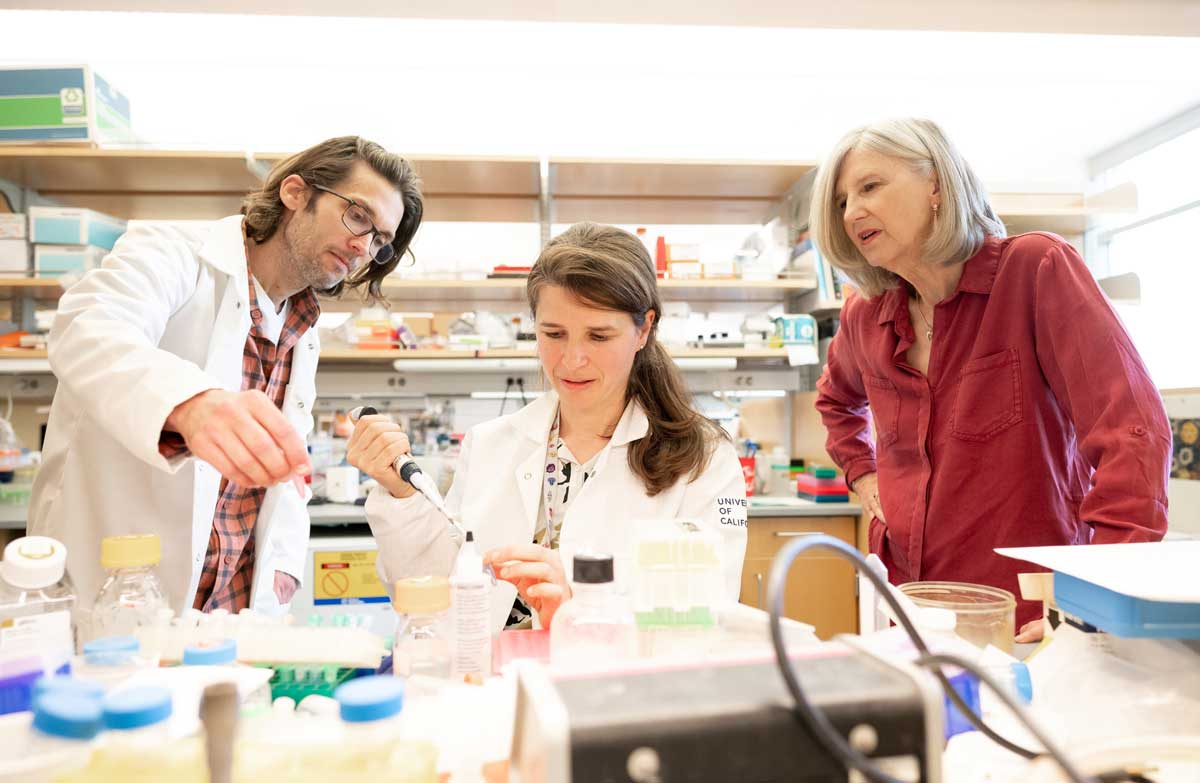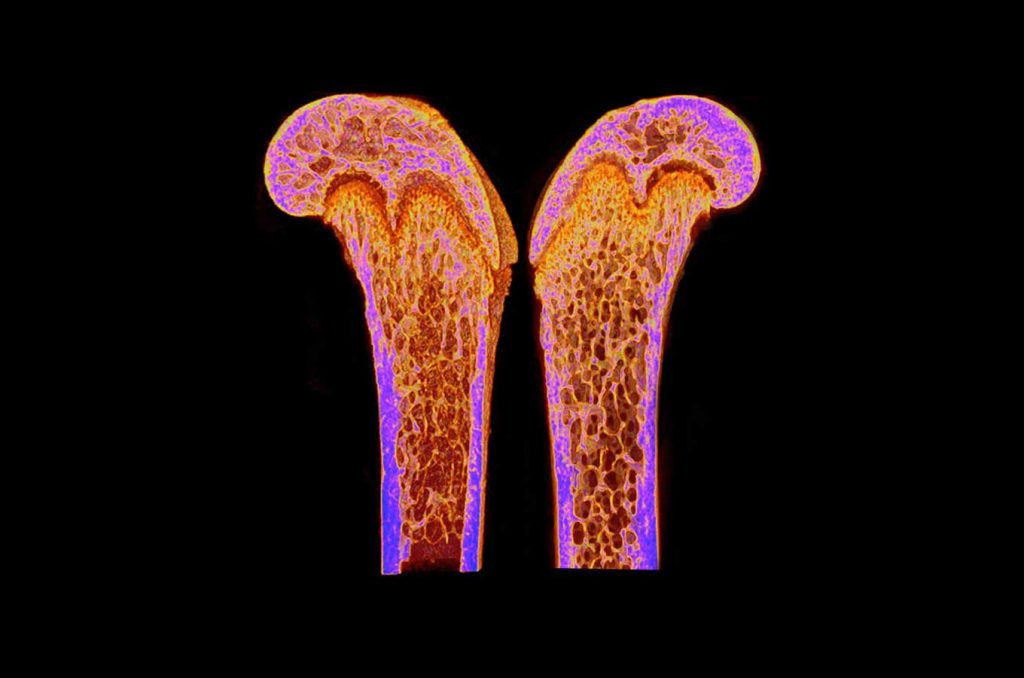A newly discovered hormone that keeps bones strong in lactating women may also help with fracture healing and treat osteoporosis in the broader population. Researchers from the University of California, San Francisco and the University of California, Davis have found that a hormone called maternal brain hormone 3 (CCN3) increases bone density and strength in mice.
Results announced on July 10th NatureThis finding solves a long-standing mystery: why the bones of lactating women remain relatively strong even though calcium is removed from their bones to support milk production.
“One of the remarkable things about this finding is that we might have missed it entirely if we hadn’t studied female mice, which is unfortunately the standard in biomedical research,” he said. Holly Ingraham“This study highlights how important it is to look at both male and female animals throughout their lifespan to fully understand their biology,” said lead author of the new paper, David L. Gregg, PhD, professor of cellular and molecular pharmacology at UCSF.
More than 200 million people worldwide have osteoporosis, which severely weakens bones and causes frequent fractures. Women are at particular risk for osteoporosis after menopause because levels of estrogen, the sex hormone that normally promotes bone formation, fall. Estrogen levels are also low during breastfeeding, but osteoporosis and fractures are very rare during this time. This suggests that something other than estrogen is promoting bone growth.
A hormone produced only during lactation
Ingraham’s Lab Previously discovered Blocking a specific estrogen receptor on specific neurons in a small region of the brain led to a significant increase in bone mass in female mice, but not in male mice. The researchers suspected that a hormone in the blood was responsible for the super-strong bones, but they couldn’t pinpoint it at the time. The search has been prolonged even further by the global pandemic.
In the new study, Ingraham and colleagues investigated this bone-building hormone extensively and ultimately identified CCN3 as the causative factor in mutated females. Initially, the team was surprised by this result, because CCN3 did not fit the typical profile of a hormone secreted by neurons.
Their doubts were erased when they found CCN3 in the same brain regions of lactating female mice. When these particular neurons did not produce CCN3, lactating female mice rapidly lost bone and their pups began to lose weight, supporting the importance of the hormone in maintaining bone health during lactation. Based on this discovery, they now call CCN3 the maternal brain hormone (MBH).
Hormones strengthen bones in young, old, male and female mice
When implemented in young adult and older female or male mice, strategies to increase circulating CCN3 dramatically increased bone mass and strength over a period of several weeks. In some estrogen-deprived or very old female mice, CCN3 more than doubled their bone mass.
Ingraham’s scientific collaborator Thomas AmbrosiWhen Dr. Schneider, an assistant professor of orthopedic surgery at the University of California, Davis, examined the bones, he was amazed at their strength.
“There are some situations where highly mineralized bones are not necessarily a good thing; they can weaken the bones and actually make them more susceptible to fracture,” he explained, “but when we tested these bones, we found that they were much stronger than normal.”
Ambrosi took a closer look at the stem cells in bones that are responsible for generating new bone and found that when these cells were exposed to CCN3, they were much more likely to generate new bone cells.
Hydrogel patch heals bone fractures in mice
To test the hormone’s ability to aid bone healing, the researchers created a hydrogel patch that could be applied directly to the fracture site and slowly released CCN3 over a two-week period. In older mice, fractures usually don’t heal well. But the CCN3 patch promoted new bone formation at the fracture site, contributing to youthful healing of the fracture.
“We have not been able to achieve these mineralization and healing outcomes with other strategies,” Ambrosi says, “and we are excited to take this research further and apply CCN3 to other problems, such as cartilage regeneration.”
The researchers plan to conduct further studies on the molecular mechanisms of CCN3, the levels of CCN3 in lactating women, and the potential of this hormone to treat various bone diseases.
Muriel BabyCo-first author and associate professor in the Department of Endocrinology at the University of California, San Francisco (UCSF), Dr. Gregory, M.D., is eager to investigate how CCN3 affects bone metabolism in clinically relevant disease settings. In partnership with the UCSF Catalyst program, William KraussThe senior scientist and co-leader of the project, Dr.
“Bone loss not only occurs in postmenopausal women, but also frequently in breast cancer survivors who take certain hormone-blocking drugs, in young, highly trained, elite female athletes, and in older men who have a lower relative survival rate after hip fracture than women,” Ingraham said. “If CCN3 could increase bone mass in all of these scenarios, that would be very exciting.”

author: Other authors from UCSF include Candice B. Herber, Zsofia Torok, Joni Nikkanen, Ruben Rodriquez, Saul Villeda and Fernanda Castro-Navarro. Other authors from UC Davis include Kun Chen, Erika E. Wheeler, J. Kent Leach and Nancy E. Lane. See the paper for the full author list.
Funding: This research was supported by the National Institutes of Health (R01DK121657-S1, NIA-1K01AG065916, 5K12GM081266, K99DK129763, AG066963, R01DK132073, R01AG067740, R01AG070647, R01AG062331, R01DK121657), a Stanford Pilot Award, and a Senior Scholar Award (GCRLE0320).
Disclosure: none.


